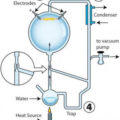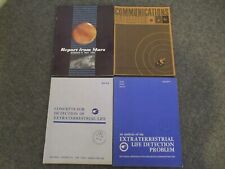
Like life on Earth, extraterrestrial life should create an environment with a large amount of molecules that favor one kind of handedness, and now, scientists at the National Institute of Standards and Technology (NIST) believe we may be able to identify life-harboring planets by looking for left- (or right-) handed reflected light from these planets.
Such an approach would allow spaceborne instruments to detect a preponderance of molecules that have a certain “chirality,” or handedness. A right-handed molecule has the same composition as its left-handed cousin, but their chemical behavior differs. Because many substances critical to life favor a particular handedness, NIST’s Thom Germer and his colleagues think chirality might reveal life’s presence at great distances.
“You don’t want to limit yourself to looking for specific materials like oxygen that Earth creatures use, because that makes assumptions about what life is,” says Germer. “But amino acids, sugars, DNA – each of these substances is either right- or left-handed in every living thing.”
“If the surface had just a collection of random chiral molecules, half would go left, half right,” Germer says. “But life’s self-assembly means they all would go one way. It’s hard to imagine a planet’s surface exhibiting handedness without the presence of self assembly, which is an essential component of life.”
Because chiral molecules reflect light in a way that indicates their handedness, the research team built a device to shine light on plant leaves and bacteria, and then detect the polarized reflections from the organisms’ chlorophyll from a short distance away. The device detected chirality from both sources.
The team intends to improve its detector so it can look at pond surfaces and then landscape-sized regions on Earth. Provided the team continues to get good results, Germer says, they will propose that it be built into a large telescope or mounted on a space probe.
“We need to be sure we get a signal from our own planet before we can look at others,” he says. “But what’s neat about the concept is that it is sensitive to something that comes from the process behind organic self-assembly, but not necessarily life as we know it.”
Related:
Extraterrestrial amino acids left-handed
CO2 detected on distant extrasolar planet
Organic molecule hints at alien life
Polarization Technique Used To “See” Exoplanet


















Comments are closed.